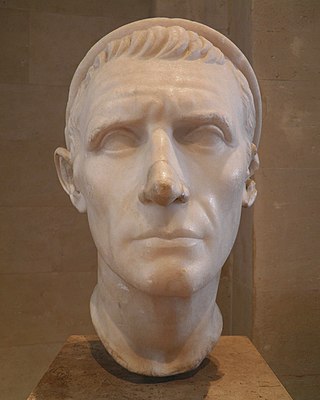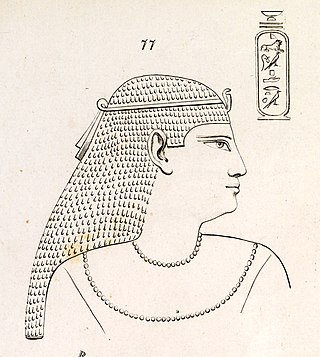Related Research Articles

The Seleucid Empire was a Greek power in West Asia during the Hellenistic period. It was founded in 312 BC by the Macedonian general Seleucus I Nicator, following the division of the Macedonian Empire founded by Alexander the Great, and ruled by the Seleucid dynasty until its annexation by the Roman Republic under Pompey in 63 BC.

Demetrius I, surnamed Soter, reigned as king (basileus) of the Hellenistic Seleucid Empire from November 162 to June 150 BC. Demetrius grew up in Rome as a hostage, but returned to Greek Syria and overthrew his young cousin Antiochus V Eupator and regent Lysias. Demetrius took control during a turbulent time of the Empire, and spent much of his time fighting off revolts and challenges to his power from threats such as Timarchus and Alexander Balas.

Antiochus III the Great was a Greek Hellenistic king and the 6th ruler of the Seleucid Empire, reigning from 223 to 187 BC. He ruled over the region of Syria and large parts of the rest of western Asia towards the end of the 3rd century BC. Rising to the throne at the age of eighteen in April/June 223 BC, his early campaigns against the Ptolemaic Kingdom were unsuccessful, but in the following years Antiochus gained several military victories and substantially expanded the empire's territory. His traditional designation, the Great, reflects an epithet he assumed. He also assumed the title Basileus Megas, the traditional title of the Persian kings. A militarily active ruler, Antiochus restored much of the territory of the Seleucid Empire, before suffering a serious setback, towards the end of his reign, in his war against Rome.

Cleopatra I Syra was a princess of the Seleucid Empire, Queen of Ptolemaic Egypt by marriage to Ptolemy V of Egypt, and regent of Egypt during the minority of their son, Ptolemy VI, from her husband's death in 180 BC until her own death in 176 BC.

Antiochus IV Epiphanes was a Greek Hellenistic king who ruled the Seleucid Empire from 175 BC until his death in 164 BC. He was a son of King Antiochus III the Great. Originally named Mithradates, he assumed the name Antiochus after he ascended the throne. Notable events during Antiochus's reign include his near-conquest of Ptolemaic Egypt, his persecution of the Jews of Judea and Samaria, and the rebellion of the Jewish Maccabees.

The Maccabees, also spelled Machabees, were a group of Jewish rebel warriors who took control of Judea, which at the time was part of the Seleucid Empire. They founded the Hasmonean dynasty, which ruled from 167 to 37 BCE, being a fully independent kingdom from 104 to 63 BCE. They reasserted the Jewish religion, expanded the boundaries of Judea by conquest, and reduced the influence of Hellenism and Hellenistic Judaism.

The Hasmonean dynasty was a ruling dynasty of Judea and surrounding regions during the Hellenistic times of the Second Temple period, from c. 140 BCE to 37 BCE. Between c. 140 and c. 116 BCE the dynasty ruled Judea semi-autonomously in the Seleucid Empire, and from roughly 110 BCE, with the empire disintegrating, Judea gained further autonomy and expanded into the neighboring regions of Perea, Samaria, Idumea, Galilee, and Iturea. The Hasmonean rulers took the Greek title basileus ("king") as the kingdom became a regional power for several decades. Forces of the Roman Republic intervened in the Hasmonean Civil War in 63 BCE and made it into a client state, marking the decline of Hasmonean dynasty; Herod the Great displaced the last reigning Hasmonean client-ruler in 37 BCE.
2 Maccabees, also known as the Second Book of Maccabees, Second Maccabees, and abbreviated as 2 Macc., is a deuterocanonical book which recounts the persecution of Jews under King Antiochus IV Epiphanes and the Maccabean Revolt against him. It concludes with the defeat of the Seleucid Empire general Nicanor in 161 BC by Judas Maccabeus, the leader of the Maccabees.

John Hyrcanus was a Hasmonean (Maccabean) leader and Jewish high priest of the 2nd century BCE. In rabbinic literature he is often referred to as Yoḥanan Cohen Gadol, "John the High Priest".
3 Maccabees, also called the Third Book of Maccabees, is a book written in Koine Greek, likely in the 1st century BC in either the late Ptolemaic period of Egypt or in early Roman Egypt. Despite the title, the book has nothing to do with the Maccabean Revolt against the Seleucid Empire described in 1 Maccabees and 2 Maccabees. Instead it tells the story of a persecution of the Jews under Pharaoh Ptolemy IV Philopator in Ptolemaic Egypt, some decades before the Maccabee uprising in Judea. The story purports to explain the origin of a Purim-like festival celebrated in Egypt. 3 Maccabees is somewhat similar to the Book of Esther, another book which describes how a king is advised to annihilate the Diaspora Jews in his territory, yet is thwarted by God.
Jason of Cyrene was a Hellenistic Jew who lived around the middle of the second century BCE. He is the author of a five-volume history of the Maccabean Revolt and its preceding events, which subsequently became a lost work. His history was preserved indirectly in an abridgment by an unknown Egyptian Jew, the book of 2 Maccabees, which was eventually included in the Septuagint, the Greek version of the Jewish scriptures. 2 Maccabees was eventually recognized as a deuterocanonical book included in the Catholic and Orthodox Christian biblical canon.

Mattathias ben Johanan was a Kohen who helped spark the Maccabean Revolt against the Hellenistic Seleucid Empire. Mattathias's story is related in the deuterocanonical book of 1 Maccabees. Mattathias is accorded a central role in the story of Hanukkah and, as a result, is named in the Al HaNissim prayer Jews add to the Birkat Hamazon and the Amidah during the festival's eight days.
Nicanor was a Syrian-Greek general (strategos) that served the Seleucid Empire during the reigns of kings Antiochus IV Epiphanes and Demetrius I Soter. He served during the Maccabean Revolt in Judea, then part of the Seleucid Empire, and served for a time as governor in Jerusalem. Relations between the government and the Jewish rebels eventually turned sufficiently hostile that he threatened the priests at the Second Temple and led an army to find and defeat Judas Maccabeus's followers, but he and his army were defeated at the Battle of Adasa. Nicanor was killed, his corpse was desecrated, his head and right hand hung for public display back in Jerusalem, and a new festival was declared to celebrate his defeat.
Gazara was, according to the Bible, a fortress of great strength in Judea that figures often in the Maccabean wars.
Onias IV was the son of Onias III and the heir of the Zadokite line of High Priests of Israel. He built a new Jewish temple at Leontopolis in Ptolemaic Egypt where he reigned as a rival High Priest to the hierarchy in Jerusalem. While he never gained leadership in Judea, he still held influence in Egypt; the territory most heavily populated by Jews was called the Land of Onias in reference to his influence.

The Acra, with the meaning of "stronghold", was a place in Jerusalem thought to have had a fortified compound built by Antiochus Epiphanes, ruler of the Seleucid Empire, following his sack of the city in 168 BCE. The name Acra was also used at a later time for a city quarter probably associated with the by-then destroyed fortress, known in his time to Josephus as both Acra and "the lower city". The fortress played a significant role in the events surrounding the Maccabean Revolt, which resulted in the formation of the Hasmonean Kingdom. The "upper city" was captured by Judas Maccabeus, with the Seleucid garrison taking refuge in the "Acra" below, and the task of destroying this last enemy stronghold inside Jerusalem fell to Simon Maccabeus surnamed Thassi. Our knowledge about the Acra is based almost exclusively on the writings of Josephus, which are of a later date, and on the First and Second Books of Maccabees, which were written not long after the described events.
Jason was the High Priest of Israel from around 175 BCE to 171 BCE during the Second Temple period of Judaism. He was of the Oniad family and was brother to Onias III, his predecessor as High Priest. Josephus records that his name was originally Jesus or Joshua before he changed it.

The Maccabean Revolt was a Jewish rebellion led by the Maccabees against the Seleucid Empire and against Hellenistic influence on Jewish life. The main phase of the revolt lasted from 167 to 160 BCE and ended with the Seleucids in control of Judea, but conflict between the Maccabees, Hellenized Jews, and the Seleucids continued until 134 BCE, with the Maccabees eventually attaining independence.

Doron Mendels is a full professor in the history department of the Hebrew University in Jerusalem.

Eleazar was a Jewish martyr who died during the persecution of Judaism in Judea ordered by King Antiochus IV Epiphanes. Together with the woman with seven sons, he is one of the "Holy Maccabean Martyrs" celebrated by the Roman Catholic, Eastern Orthodox, and Oriental Orthodox churches. In the Eastern Orthodox calendar their feast day is August 1.
References
- 1 2 3 4 5 6 "Prof. Sylvie Honigman". Tel Aviv University . Retrieved July 18, 2020.
- ↑ "Participating Members". The Maccabees Project. Boston University . Retrieved July 18, 2020.
- ↑ Collins, John J. (2015). "Tales of High Priests and Taxes: The Books of the Maccabees and the Judean Rebellion against Antiochus IV by Sylvie Honigman". Journal of Jewish Studies. 66 (1): 205–209. doi:10.18647/3224/JJS-2015.
- ↑ Mendels, Doron (2021). "1 Maccabees". In Oegema, Gerbern S. (ed.). The Oxford Handbook of the Apocrypha. Oxford University Press. pp. 150–168. doi:10.1093/oxfordhb/9780190689643.013.9. ISBN 9780190689667. Mendels also cites:
Bar-Kochva, Bezalel (2016). "The Religious Persecutions of Antiochus Epiphanes as a Historical Reality". Tarbiz (in Hebrew). 84 (3): 295–344.